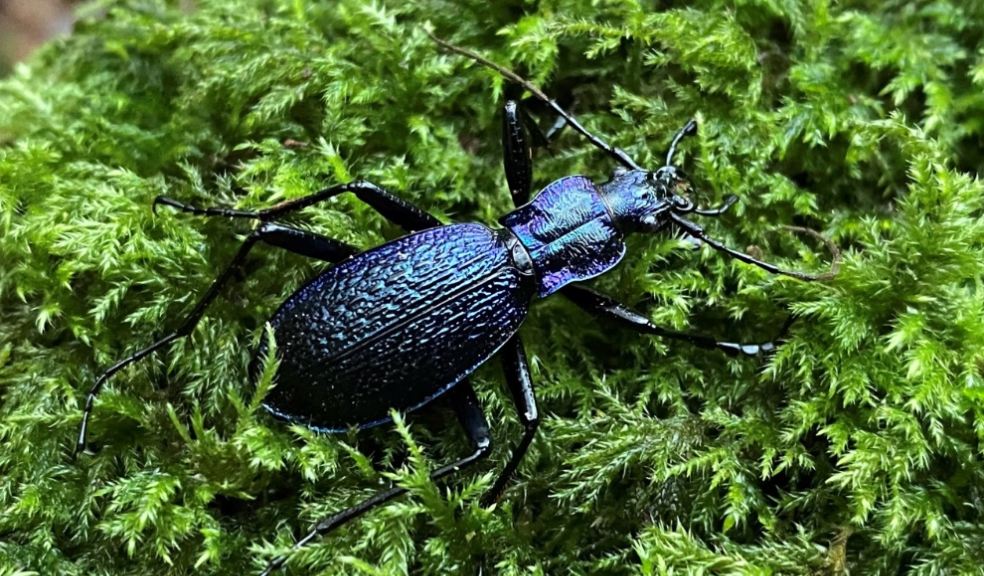
Help blue beetles this Blue Monday
The third Monday in January has been labelled as Blue Monday, and is said to be the most depressing day of the year, but there’s positive blue news today as Buglife reopens their Citizen Science survey to help find more populations of the rare Blue Ground Beetle (Carabus intricatus) in Devon and Cornwall.
The Blue Ground Beetle is one of the UK’s rarest beetles, and is currently only known from 15 sites in Cornwall, Devon and South Wales. At up to 38mm in length, it is the UK’s largest ground beetle, and is given its name as a result of the beautifully marked and strikingly blue-coloured body. The beetles are mainly nocturnal and can be found at any time of year, although they are most active and easiest to spot from March until June.
Blue Ground Beetles usually make their homes in damp Oak and Beech woodland. They can be found at night, clambering up the mossy trunks of trees in search of slugs, and tend to prefer areas with not much ground vegetation and lots of decaying wood. In Devon, they are largely known from Dartmoor, and in Cornwall they can be found in the east of the county in some of the woodlands surrounding Bodmin and Bodmin Moor but may well be elsewhere too.
In 2022, there was exciting news when Blue Ground Beetles were found at two new sites on Dartmoor. Buglife is now seeking help from the people of Devon and Cornwall to see whether there might be any more of these beautiful beetles lurking out there in the wild woodlands of the South West.
Scott Martin, Buglife Conservation Officer explains: “We need help to find out where these amazing beetles live as there is still a lot to learn about their distribution. This year we are particularly keen to learn more about their whereabouts in Cornwall. In the past, we have had records sent in of beetles found on woodland paths, and in log piles. Have you ever seen a large beetle that you think might be a Blue Ground Beetle? If you have, please send us a photo and help us to learn more about where these beetles can be found.”
Any records can be shared via Buglife’s South West Blue Ground Beetle project page.
Blue Ground Beetles are quite tricky to identify and can be easily confused with many other beetles, including some of their smaller, more commonly seen relatives such as the Violet Ground Beetle (Carabus violaceus) and Ridged Violet Ground Beetle (Carabus problematicus). To help with identifying any images prior to sending them in, Buglife has produced a Blue Ground Beetle Identification Guide which can be found on their website.
Scott Martin added: “Since the start of the survey we’ve received almost 150 submissions, from citizen scientists across the South West, and about 10% of these have been confirmed as Blue Ground Beetles, we’re really very pleased with the results so far and it is extremely exciting to learn where they may turn up next!
"So far we have undertaken a fair amount of work on Dartmoor but we are keen to establish whether the beetles may be in more Cornish locations. Particularly in woods in the eastern half of the county.
"We’re yet to discover any new sites through the hunt, but always have hope and it would be absolutely fantastic if through this survey we were able to find new populations of the Blue Ground Beetle in the South West.”
This survey is part of Buglife’s South West Blue Ground Beetle project which is funded by Natural England. To get involved, visit our website buglife.org.uk.
Image credit: Blue Ground Beetle (Carabus intricatus) © Laura Larkin.













